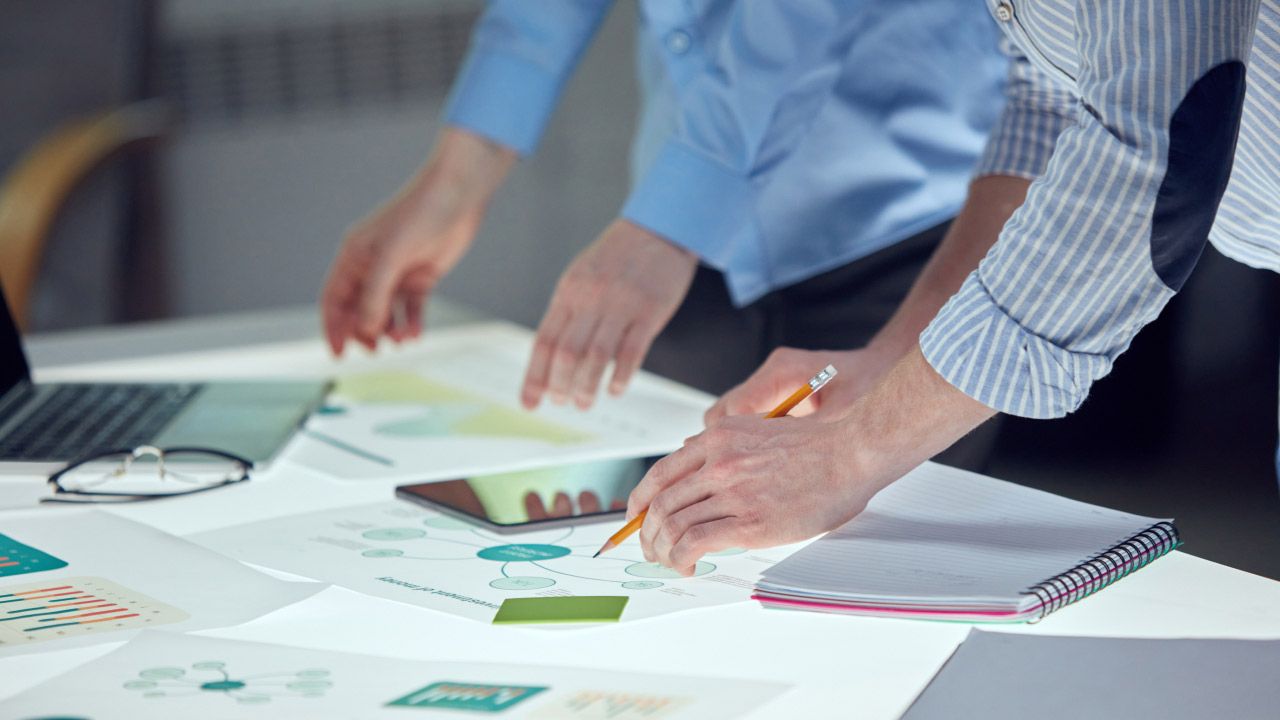Product Design And UX Design Roles: Unveiling The Differences
By Marco Franzoni • May 13, 2024

In today's rapidly evolving digital landscape, the distinction between Product Design and UX (User Experience) Design has become more critical than ever. These roles, integral to driving business success and innovation, serve as the backbone of how products are conceived, developed, and refined. Understanding these roles not only enhances the development process but also ensures that the end products are perfectly aligned with user needs and business goals.
Product Design and UX Design are often spoken of interchangeably, yet they encompass very distinct responsibilities and skill sets that cater to different aspects of the user's experience and interaction with a product. Product designers focus broadly on the conceptualization and realization of products, embracing both the aesthetic and functional aspects. They engage in everything from market research and idea generation to prototyping and user testing, ensuring that every product hits the market with its best foot forward.
On the other hand, UX designers dive deep into how users interact with these products. Their role revolves around making the product not just usable but delightful to use. They leverage user feedback, conduct usability testing, and employ prototyping tools to refine interfaces and workflows. Their ultimate goal? To ensure that every interaction feels intuitive and every functionality addresses real user pain points.
Both roles require a synergy of creativity, technical skills, and a human-centered approach, aiming to merge business objectives with user satisfaction. This introduction sets the stage to explore these roles in-depth, shedding light on their nuances and the dynamic interplay that fosters the creation of successful, innovative products. As we peel back the layers, you'll gain a clearer understanding of how these disciplines impact not just product success, but also the overarching goals of businesses in the digital age.
Part 1: Foundations of Product Design and UX Design
Why is product design important for your business?
Product design is crucial to any business because it directly influences both the usability and the aesthetic appeal of a product, impacting customer satisfaction and retention. Effective product design ensures that products not only meet the practical needs of users but also resonate with them on an emotional level. It integrates market research, user feedback, and innovative design practices to create solutions that are not only functional but also competitive in the marketplace. By focusing on the entire product lifecycle, product designers help businesses anticipate and meet market needs, thus driving business success.
Why does UX design matter?
UX design focuses on enhancing the satisfaction a user derives from a product by improving the usability, accessibility, and pleasure provided in the interaction with the product. It is essential for ensuring that the user's experience is as intuitive and enjoyable as possible. UX designers employ a user-centric design approach to address user pain points through detailed research and prototyping. They ensure that every aspect of the user interface caters to the needs of potential users, thereby enhancing overall user satisfaction and loyalty, which are key to long-term business success.
Design Thinking As The Foundation For The Design Process
Design Thinking is a human-centered approach to innovation that integrates the needs of people, the possibilities of technology, and the requirements for business success. It helps teams navigate the complexities of designing user-centric products through a process characterized by empathy, ideation, and prototyping. Design Thinking encourages broad-range thinking and cross-functional collaboration, which are crucial for developing innovative products that resonate with the target audience. By employing design thinking, businesses can foster a culture of innovation that not only meets the current market needs but also anticipates future challenges and opportunities.
Incorporating user research, user experience design, and the holistic view of the design process ensures that both product designers and UX designers can collaborate closely to create products that are not only functional and aesthetically pleasing but also deeply embedded with user needs and business goals. This collaborative effort is vital in building successful products that drive business objectives, maintain brand consistency, and ensure the success of the product in the competitive market.

Part 2: Defining Roles and Responsibilities
The role of a Product Designer
Define Product Vision And Strategy
Product designers play a critical role in setting the strategic direction for new products. They work closely with product managers and stakeholders to define a clear vision and roadmap that aligns with business objectives and market opportunities. This process involves a deep understanding of the target market and the ability to foresee market trends, ensuring that the product will meet the future needs of customers.
Generate ideas
Idea generation is a fundamental aspect of the product designer's role, involving creativity and innovation to solve specific user problems. Product designers use various techniques such as brainstorming, sketching, and industrial design principles to develop different ideas that address user pain points effectively. This phase often requires a broad range of technical skills and a deep understanding of the users' lifestyles and preferences.
Prototype and test
Prototyping tools are essential in the product designer's toolkit. They create high-fidelity prototypes that simulate the final product, which are then tested with real users to gather critical feedback. This phase is crucial for refining product features and ensuring the product's usability meets user expectations. Usability testing allows designers to iterate on their designs quickly, reducing the risk of product failure upon launch.
Responsibilities and Job Duties of a UX Designer
User Analysis
UX designers begin their process with user analysis to understand deeply the needs, behaviors, and motivations of the user base. This involves conducting user and market research, utilizing research tools, and creating user personas. The insights gained from this analysis are pivotal in guiding the UX design process to ensure that the product delivers a user-centric design that enhances the user's experience.
4 key steps in UX design
The UX design process encompasses several critical steps: empathize with the users, define the user needs and problems, ideate on potential solutions, and create prototypes to test these solutions. Each step is interlinked and requires constant feedback loops with the target audience to refine the product's usability and interface.
Testing With The Product Team
Collaboration is key in UX design, particularly when testing concepts with the product team. UX designers work closely with developers, product managers, and other stakeholders to ensure that the design is feasible and aligns with the overall product strategy. This cross-functional collaboration is vital for maintaining brand consistency and ensuring that the final product reflects the initial design intentions.
Product Designer Vs. UX Designer: Comparison of Job Roles
While both product designers and UX designers aim to enhance user satisfaction and ensure the success of the product, their roles differ significantly in focus and scope. Product designers are often more involved in the broader lifecycle of the product, from initial concept to final delivery. They must consider various factors such as manufacturing, market launch, and the overall design of physical products.
Conversely, UX designers are more focused on the digital aspects of design, such as creating efficient user interfaces, improving information architecture, and ensuring that digital interactions are intuitive and straightforward. Their role is crucial in the digital age, where user experiences can dictate the success of software and digital products.
Both roles require a unique set of skills and a deep understanding of both their users and the business landscape. However, by working in tandem, product designers and UX designers can ensure that both the tangible and intangible aspects of a product are optimized for success.

Part 3: The Design Processes
The product design process in 5 steps
The product design process is a systematic approach that guides the journey from idea to market-ready product. This process generally encompasses five key steps: ideation, research, design, prototyping, and testing. Each stage is crucial and requires deep collaboration across different teams, including design, engineering, and marketing, to ensure that the product not only meets the technical specifications but also resonates with the target market. This involves using a variety of research tools to gather user feedback and usability testing to refine the product according to the user's experience.
Examples of Exceptional UX Design in Websites or Digital Products
Exceptional UX design can transform a good digital product into a great one. By examining case studies of successful digital products, we can see how effective user interfaces and thoughtful user experience design lead to high user engagement and satisfaction. These examples often highlight the importance of understanding user needs, the role of aesthetics in usability, and the impact of a seamless user journey on the overall success of digital products. UX designers focus on making these interactions as intuitive and enjoyable as possible, utilizing user-centric design principles and innovative prototyping tools.
The Differences Between Product Designers and UX Designers
While both product designers and UX designers work closely to create appealing and functional products, their roles diverge significantly in focus and methodology. Product designers often have a broader role that encompasses the entire design process from ideation through to production and market launch. They typically deal with both digital and physical products and must consider factors like manufacturing processes and product lifecycle management.
Conversely, UX designers specialize in the digital realm, focusing on how users interact with digital interfaces. Their work is predominantly concerned with optimizing user interfaces, improving the flow of digital products, and ensuring that all aspects of the user's interaction are aligned with human-centered design principles. This distinction is crucial in understanding how both roles contribute differently to a product's success in meeting business goals and user expectations.
This section of the blog provides a comprehensive overview of the distinct processes and responsibilities that define the roles of product designers and UX designers, emphasizing their unique contributions to the creation of successful products. Through understanding these roles, businesses can better strategize their design processes, ensuring that both user satisfaction and business objectives are met.
Part 4: Research and Development
Product Research
Product research is a foundational step in the design process, crucial for understanding what already exists in the market and identifying opportunities for innovation. This stage involves a detailed analysis of existing products, evaluating their features, strengths, and weaknesses. Product designers use this information to generate ideas that fill market gaps or enhance current offerings. Effective product research supports the development process by ensuring that new products are not only innovative but also competitive and relevant to the target market's needs.
Conduct user and market research
Understanding the target audience is essential for successful product design. Conducting user and market research involves gathering insights about potential customers' behaviors, preferences, and pain points. This research is typically carried out using various methods such as surveys, interviews, focus groups, and user testing. The goal is to gather actionable data that informs the design process, ensuring that the product not only meets but exceeds user expectations. UX designers play a critical role in this phase, analyzing the data to refine user personas and tailor the design to user needs.
Refine and validate design concepts
Once preliminary designs are developed, the next crucial step is to refine and validate these concepts through iterative testing. This stage uses techniques like prototyping and usability testing to solicit feedback from users and stakeholders. The feedback is then used to make informed decisions about design adjustments, enhancing the product's usability, functionality, and overall appeal. This process helps ensure that the final product will effectively solve user problems and align with business goals, thereby increasing the chances of product success.
This section highlights the importance of rigorous research and continuous refinement in product development. By integrating comprehensive product and user research with iterative design validation, businesses can develop products that are not only well-designed but also deeply aligned with the specific needs and expectations of their target market. This approach not only maximizes product relevance and appeal but also significantly enhances the potential for market success.

Part 5: From Launch to Feedback
Define Value Proposition
Defining the value proposition is crucial for any product launch, as it clearly communicates why a customer should choose this product over competitors. This statement not only highlights the unique features and benefits of the product but also aligns with the broader business objectives, ensuring that the product fits within the company’s mission and customer expectations. A strong value proposition is essential for market differentiation and plays a pivotal role in the commercial success of the product.
Examples of Successful Product Designs and Their Impact
This section explores various case studies of successful product designs to illustrate how effectively executed design can lead to significant commercial success and brand loyalty. By analyzing products that have made a substantial impact in their markets, we can extract valuable lessons on integrating user feedback, innovative design, and strategic marketing to meet user needs and exceed market expectations. These examples serve as inspiration and guidance for product teams aiming to achieve similar success.
Post-launch: Gather user feedback and make improvements
After the product launch, the design process does not end; instead, it shifts towards gathering and integrating user feedback. This ongoing feedback loop is crucial for the continuous improvement of the product. By monitoring how users interact with the product and identifying any issues they encounter, companies can make iterative improvements that enhance the user experience and ensure the product remains competitive in the market. This stage often involves conducting additional user tests, employing research tools, and collaborating closely with the design team to refine the product based on real-world usage.
This section of the blog post emphasizes the importance of a well-defined value proposition, provides motivational examples of successful products, and highlights the necessity of ongoing user engagement and iterative improvement post-launch. These elements are critical for maintaining the relevance and success of the product throughout its lifecycle, ensuring that it continues to meet both user expectations and business goals.
Part 6: Adapting the Process to the Project
The Process Should Morph To Fit The Project
Paper Prototyping
Paper prototyping is a cost-effective and quick method for testing and refining design concepts early in the development process. This technique involves creating hand-drawn sketches of a product’s interface, which can be used to gather initial feedback from users and stakeholders. It allows designers to experiment with different ideas and layouts before committing significant resources to digital prototyping. This method is particularly useful in fostering creativity and rapid iteration within the product team.
Design Handoff
The design handoff is a critical phase in the development process where the design team transfers detailed design specifications and prototypes to the engineering team for implementation. This stage requires meticulous documentation and clear communication to ensure that the final product faithfully represents the envisioned design. Effective handoff processes often leverage digital tools to minimize misunderstandings and ensure seamless collaboration between designers and developers.
Personalization Storage
In an era where user-centric design is paramount, personalization storage refers to the systems used to store user preferences and data to tailor the product experience to individual needs. Integrating personalization requires careful planning and collaboration across the product team, including designers, developers, and data analysts. This aspect of the design process helps in creating a more engaging and user-friendly product by adapting its features and content according to user data.
This section of the blog highlights the flexibility required in the design process to adapt to specific project needs. By discussing techniques like paper prototyping, detailing the importance of a thorough design handoff, and addressing the implementation of personalization, it underscores the necessity of cross-functional collaboration and project management to enhance the product's design and usability. These adaptable processes ensure that the product development remains agile and responsive to the evolving demands of users and the market.

Conclusion: The Evolving Roles in Design
Learn More about Product Design
The field of product design is continually evolving, driven by innovations in technology, changes in consumer behavior, and the growing importance of design in strategic business decisions. To stay competitive and effective, designers must constantly refine their skills and adapt to new challenges. Engaging with the latest resources, case studies, and thought leadership in product design can inspire and equip professionals to push the boundaries of what is possible.
Cover More Angles on Projects – with Product Design
In today’s multidisciplinary product teams, covering more angles on any given project isn’t just beneficial; it’s essential. Integrating diverse perspectives from various disciplines enhances creativity and leads to more comprehensive solutions. A human-centered approach in product design ensures that products not only function well but also resonate deeply with users, providing them with meaningful and delightful experiences. This holistic view, combined with a commitment to rigorous testing and user feedback, cultivates an environment where truly innovative products can emerge.
In conclusion, as we have explored throughout this post, the roles of product designers and UX designers, while distinct, are interconnected and vital to the creation of successful products. By embracing a spirit of continuous learning and adaptation, professionals in these fields can lead the way in developing products that not only meet but exceed the evolving expectations of users and stakeholders.